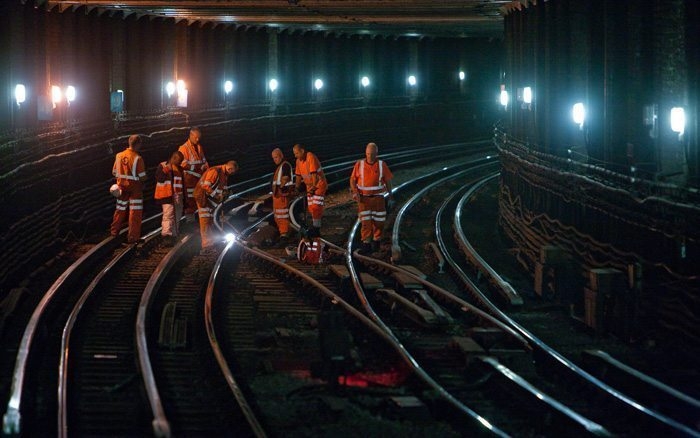
Someone recently equated banks and their systems and structures, to the underground in London. It’s a lot of pipes, wires, cables and tunnels that were built in the Victorian times and are still operating today. You have engineers on the tracks every night and day, trying to keep the systems running, whilst also trying to regularly overhaul to keep up. Air conditioning, elevators, wheelchair access, wifi and more on the underground subways has made these ancient structures feel modern, but they’re not. At their core, they are Victorian edifices to an era that harks back to a bygone age.
So again, purely for my own enjoyment, I thought it worth sharing two stories. One is the difficulty of putting a lift shaft into an underground station (cost £50 million) and the other is the hugely complex project of building a new underground line (cost £15 billion). Now link this back to how a banks core systems work, and I think you will get the point.
The challenge to make London's Victorian Tube network accessible
It was in 1863 that London began its ambitious new phase of underground development. Built by the Metropolitan Railway, the original track stretched just three miles between Paddington and Farringdon - part of what is now the Metropolitan line. Despite initial concerns from objectors that the tunnels would collapse under the weight of the traffic overhead, a piecemeal development process over the next 150 years saw the Tube develop into a vast network that today sees almost four million passengers a day travelling across 270 stations. At certain points the railway is 58.5 metres below the surface and so a challenge for many to reach and a challenge to make accessible. Engineers now have the problem of "retrofitting" lifts around old infrastructure below very congested city streets …
The article is quite long, but the point is that the transport operator spent £50 million and two years to fit an elevator into Green Park tube station. That’s just one change for one station to bring it up-to-date. There are 270 stations and when you think of this like the 270 different core systems a bank operates, you can see the scale of the problem.
The second example is the Crossrail project. If you have an hour (or six hours) free, this series of documentaries about the project from the BBC are really worth watching, especially if you're fascinated by man's ability to do what would seem to be the impossible with engineering these days.
It is one of the largest and most ambitious engineering projects in Europe, but once complete, many thousands of Londoners will go about their business largely oblivious to its presence. It is, of course, Crossrail, the 120km Berkshire-to-Essex railway, which will pass beneath London’s busy streets along 42km of underground tunnels. However, despite the superlatives, the engineers currently puzzling over how to thread Crossrail’s tunnels though London’s tangled subterranean infrastructure are not alone … the biggest challenge posed by any tunnelling project, however, lies in predicting and mitigating the effect it has on surface structures. For instance, the Crossrail team has to carefully consider the effect of its actions on the 4,500 buildings — many of them listed — that lie directly above the route … [The Engineer, July 2009]
Again, I’m summarising much of the article, but particularly liked some discussions, such as this one when the Jubilee Line was extended across London and the constructors had to dig under Big Ben (or St Stephen’s Tower to be more exact):
Big Ben was built in 1860 and has very shallow foundations that are only about 34m from the edge of this 40m-deep station. There was the potential for it to lean or tilt towards all this new work and away from the palace of Westminster.
During this work, a shaft was sunk next to the tower in Bridge Street. A drilling rig was then lowered down the shaft and 60m-long steel tubes were drilled horizontally beneath the foundations of the tower.
When the excavations began, the tower itself was heavily instrumented and linked directly to computers that were able to tell precisely how much it was moving. Liquid cement was pumped into the steel tubes beneath the tower in direct response to these readings.
It was determined that Big Ben could tolerate up to 15mm of tilt before action would be needed.
So much for the Leaning Tower of Westminster.
Anyways, the point of this is that most transport operators are spending most of their budget keeping the tracks open. Transport for London (TfL) spends over £10 billion a year, most of it on maintenance. That’s a little bit like banks. When they decide to do something new, like Crossrail, it is always more expensive, more complex and more time consuming than they expect. For example, the Crossrail build was estimated to cost £10 billion at the outset and there are concerns it may not be finished in time. It is due to open in May 2019, when it will be named the Elizabeth Line, in honour of Her Madge. That also sounds like most bank core systems projects. It is also why these numbers illustrate why banks and insurance companies are spending so much on technology (half a trillion dollars a year). Unfortunately, like subway firms, most of it (75% according to Celent) goes into maintenance.
So it's nice to be in a position of starting afresh with FinTech isn’t it, and perhaps it is the reason why Gartner is forecasting these bank technology budgets will boom in the next few years to keep up.
Chris M Skinner
Chris Skinner is best known as an independent commentator on the financial markets through his blog, TheFinanser.com, as author of the bestselling book Digital Bank, and Chair of the European networking forum the Financial Services Club. He has been voted one of the most influential people in banking by The Financial Brand (as well as one of the best blogs), a FinTech Titan (Next Bank), one of the Fintech Leaders you need to follow (City AM, Deluxe and Jax Finance), as well as one of the Top 40 most influential people in financial technology by the Wall Street Journal's Financial News. To learn more click here...






















